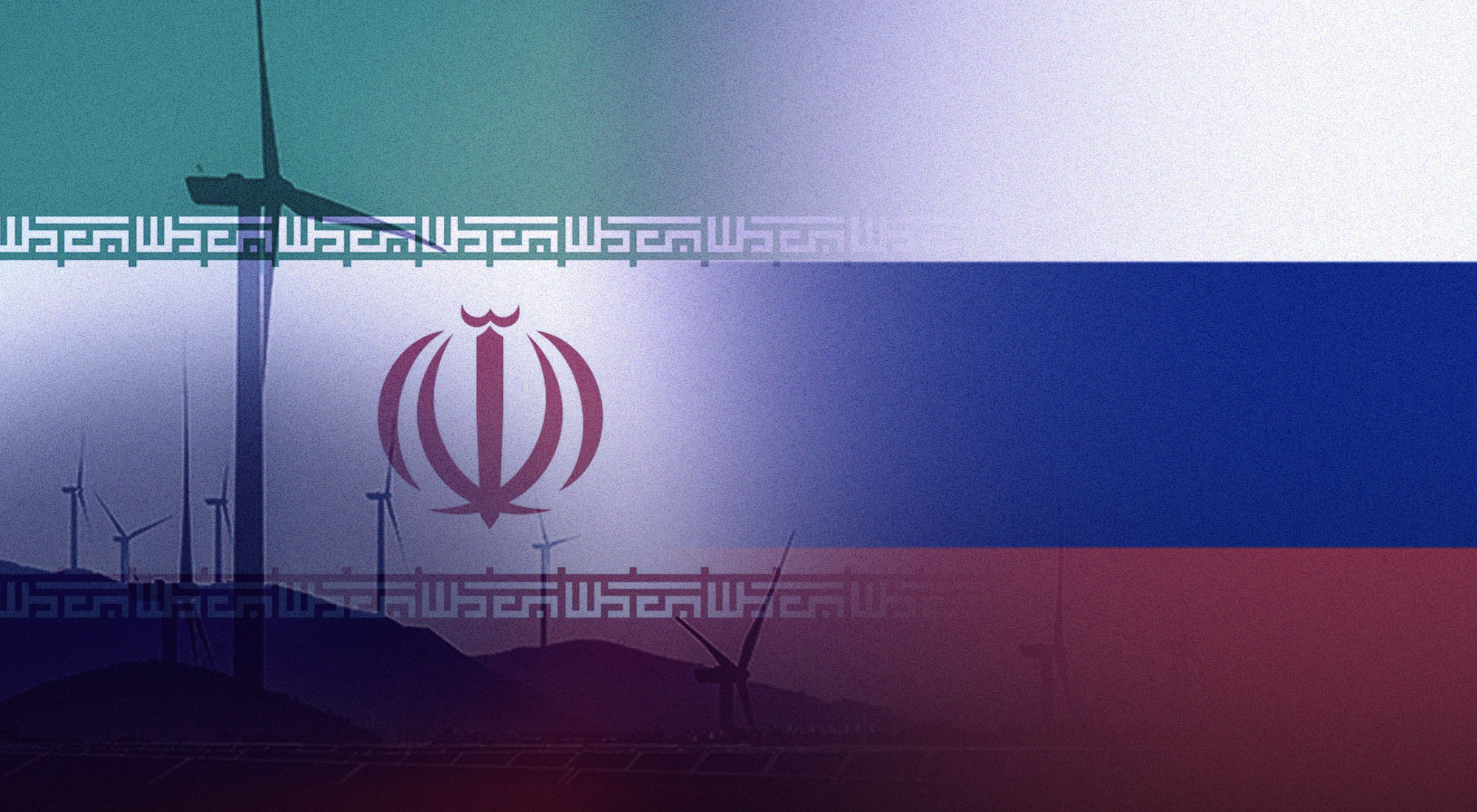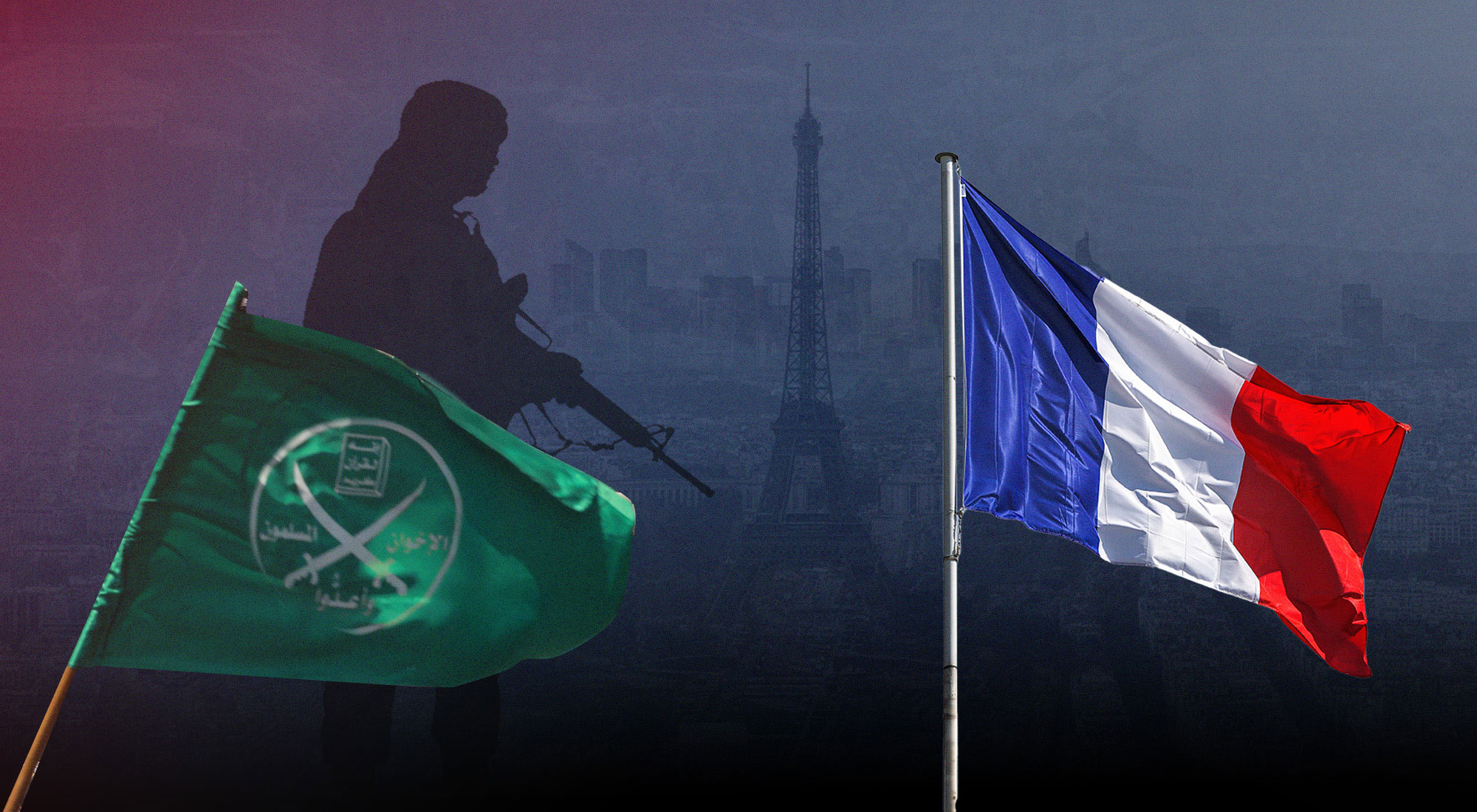A month-long military exercise completed in June 2022 by the Israel Defense Forces (IDF) served as a platform for rebuilding credibility around the potential Israeli military strike option, as Israel seeks to stress its red lines on Iranian nuclear progress, and as the United States is focused on containing Russia and prioritizing readiness for competition with China.
The IDF’s Chariots of Fire war drill, completed on June 3, was the largest held by the IDF in decades, and it simulated conflict scenarios in multiple arenas, including in Lebanon against Hezbollah and long-range strikes against Iran’s nuclear sites.[1] While the IDF holds continuous combat drills all year round, organizing one at this scope requires unusual levels of coordination, planning, and a quiet period that allows sections of the military to take part.
In the fourth week of the exercise, Israeli forces travelled to the neighboring Mediterranean island of Cyprus to practice combat in unfamiliar varied terrain, in cooperation with the Cypriot National Guard, in what appears to have been a simulation of conflict in Lebanon against Iran’s chief regional proxy, Hezbollah.[2] Towards the end of the exercise, the Israeli Air Force deployed dozens of aircraft over the Mediterranean to take part in a long-range strike drill, which simulated “a long-range flight, aerial refueling and striking distant targets.”[3]
During the month-long drill, the IDF also practiced its ability to rapidly transition from routine to emergency, to coordinate firepower between air and ground forces, utilizing its air defense capabilities, and the activation of new digital command and control capabilities, designed to enable all branches of the Israeli military to share targets with one another rapidly and act on the data.[4] Extensive ground maneuvering exercises were also held by IDF forces in northern Israel, while the IDF’s Southern Command simulated a security escalation with the Gaza Strip’s armed organizations, including mobilizing reserves.[5]
The exercise reflects some of the key scenarios that the Israeli defense establishment expects to encounter in any potential future large-scale war. These include large-scale rocket attacks by Hezbollah from Lebanon on Israeli cities, the involvement of pro-Iran militias in Syria, and the possible intervention of Gazan terror organizations as well.
At the same time, the exercise also served to reinforce attempts by the Israeli government to reestablish the Israeli military strike option as a deterrent mechanism to Iranian decision makers, at a time when Iran’s nuclear program is continuing to make unprecedented progress in the uranium enrichment domain.[6] The extent to which such flexes of military muscle will influence the Iranian regime is unknown. What is known, however, is that military pressure in the form of American forces deployed to Afghanistan and Iraq, to Iran’s west and east, resulted in a halt by Iran of its nuclear program in 2003.[7] This progress includes a dramatic increase in the number of deployed advanced centrifuges,[8] and the stockpiling of 60 kilograms of 60 percent enriched uranium (which is almost military-grade enrichment level – 90 percent).[9]
As talks stalled and Iranian nuclear progress continued, a series of reported assassinations rocked Iran, including the alleged poisoning of two scientists, Ayoub Entezari and Kamran Aghamolaei, who died in hospital within days of each other, 400 miles apart. According to The New York Times, Iran suspects that they were poisoned by Israel.[10] Israel, however, has not commented on the charges by Iran. In the past, Tehran accused Israel of being behind a string of targeted assassinations of its nuclear scientists between 2010 and 2012, which killed four, and again blamed Israel for the November 2020 assassination of top Iranian nuclear scientist Mohsen Fakhrizadeh.[11]
According to reports, Ayoub Entezari was an aeronautical engineer who worked at a military research center, while Kamran Aghamolaei was described as a “geologist”. Israeli news outlets, as well as Persian news outlets outside of Iran, claimed the latter worked at Iran’s Natanz nuclear facility.[12] Enterazi reportedly developed symptoms of food poisoning after being invited to dinner in Yazd, while Aghamolaei reportedly returned from a business trip to Tabiz when he developed intense stomach symptoms.
These reports join earlier reports of alleged sabotage attacks on the Natanz uranium enrichment site in April 2021, which reportedly destroyed thousands of centrifuges.[13] More recently, the Iranians reportedly began digging a vast new underground nuclear facility just south of Natanz, which is meant to house both centrifuges and a centrifuge assembly plant, and which will presumably operate alongside the underground Fordow uranium enrichment site and the existing Natanz site.[14] According to The New York Times, “the new facility is close to Natanz, but it resembles Fordow, which would require the largest bunker-busting bombs in the American inventory to attack. Israel does not yet possess those bunker-busters, or have a means to deliver them.”[15] In May, Defense Minister Benny Gantz also cautioned that “Iran is making an effort to complete the manufacturing and installation of 1,000 additional advanced IR6 centrifuges in its nuclear facilities, including new facilities being built at underground sites abutting Natanz.”[16]
In light of these dramatic developments, Israeli officials have begun stepping up verbal warnings over Israeli red lines regarding Iran’s nuclear program – talk that is being accompanied by a growing pace of military readiness steps in Israel, of which the Chariots of Fire exercise is the latest demonstration. Israel has avoided publicly committing itself to specific red lines when it comes to Iran’s nuclear program, but it has indicated that there is a time limit to its willingness to observe further Iranian uranium enrichment. While it has not addressed other aspects of a nuclear weapons program, like creating a warhead and placing it on a missile, it seems reasonable to assume that those activities would all be breaches of Israeli red lines.
Even before the exercise, a steady escalation in Israeli statements made it clear that Israel was deeply concerned about the diplomatic stalemate and Iran’s continued nuclear progress. In December 2021, Defense Minister Benny Gantz notified US officials during a visit to Washington that he had instructed the IDF to prepare itself for an attack on Iran’s nuclear program.[17] And in early June 2022, Israel told the United Nations International Atomic Energy Agency (IAEA) that it “would prefer a diplomatic resolution to the standoff over Iran’s nuclear program but it could take independent action.”[18]
Israel’s intelligence community was able to secure a diplomatic victory when information on three previously undeclared Iranian nuclear sites (sites that were active prior to the signing of the 2015 nuclear deal), which surfaced from the nuclear archives that Mossad seized during a 2018 Tehran raid, led the IAEA to issue a report in May stating that Iran failed to provide satisfactory or credible answers for the presence of uranium at all three sites.
During the 2018 raid, Mossad operatives entered a warehouse in the Shorabad district of Tehran, which was made to look like an old, abandoned storage space. The operatives retrieved 55,000 documents and 50,000 computer files on 183 CDs and brought them back to Israel in February of that year, with Iranian agents closely in pursuit until Mossad operatives left Iran’s borders.[19] Citing an intelligence official, one Israeli media report said that “the number of Iranian officials who knew about the existence of the archive – which included documents about Iran’s nuclear activity over the previous 15 years – was so small that Tehran was stunned by the fact someone had been able to infiltrate it.”[20] At a quarterly meeting of the IAEA Board of Governors in Vienna earlier this month, IAEA head Rafael Grossi pointed out that Iran has still “not provided explanations that are technically credible in relation to the agency’s findings at [the] three undeclared locations in Iran.”[21]
As these events occur, Israel’s attractiveness as a partner to Sunni Arab states that are also threatened by Iran continues to grow. US President Joe Biden is set to visit the Middle East in July, where he is scheduled to meet with Israeli, Saudi, and other regional leaders, as part of broader American efforts to forge an alliance that can contain Iran and its proxy network, missiles, and UAV capabilities.[22] Biden’s visit could also prove significant in promoting official Saudi-Israeli normalization of ties in the future – ties that are, to a large extent, based on a common perception of Iran as a top threat to security and stability.
In March, the US reportedly held a secret meeting of senior Israeli and Arab military officials to forge ways of coordinating efforts against Iranian missile threats.[23] A regional air defense alliance has reportedly already been successful in thwarting attacks by Iran.[24] This could be a reference to planned Iranian UAV assaults, or even missile strikes.
Most recently, after talks stalled in March this year, nuclear talks between world powers and Iran have restarted in Qatar.[25] However, American officials have said that the chances of a breakthrough in talks are low, and that the latest attempt at negotiations appears to be another effort at seeing whether a compromise solution over outstanding issues, such as the listing of Iran’s IRGC on the US Foreign Terror Organization’s blacklist, can be resolved. Iran still has an interest in reviving the talks in order to lift US sanctions, and Washington is still interested in seeing whether the Iranian nuclear problem can be placed in ‘a box’ for a number of years through a revived agreement, so that the US can pursue its great power competition priorities.
In light of the above, it is possible to conclude that the Chariots of Fire war drill, accompanied by previous statements about the prioritization of building readiness for potential Iran missions for the Israeli Air Force,[26] has the potential to significantly influence Iranian decision making on its next nuclear steps, since these events form the only visible attempt at creating a military deterrent and placing it on the table.
References
[1] Yaakov Lappin, “IDF Wraps Up Four-Week Exercise ‘Chariots of Fire’,” Jane’s Defence Weekly, June 13, 2022, https://www.janes.com/defence-news/news-detail/idf-wraps-up-four-week-exercise-chariots-of-fire.
[2] “The IDF ‘Beyond the Horizon’ Exercise Has Commenced,” IDF, May 25, 2022, https://www.idf.il/en/articles/hafatzot/the-idf-beyond-the-horizon-exercise-has-commenced/.
[3] Israel Defense Forces (IDF), Twitter Post, June 1, 2022, https://twitter.com/IDF/status/1531878778179305473?ref_src=twsrc%5Etfw.
[4] Yaakov Lappin, “Behind the Scenes of the IDF’s War Drill: A Digital Revolution,” Jewish News Syndicate, June 16, 2022, https://www.jns.org/behind-the-scenes-of-the-idfs-war-drill-a-digital-revolution/.
[5] Lappin, IDF Wraps Up Four-Week Exercise.
[6] David Albright, Sarah Burkhard, and Spencer Faragasso, “Updated Highlights of Comprehensive Survey of Iran’s Advanced Centrifuges – June 2022,” Institute for Science and International Security, June 13, 2022, https://isis-online.org/isis-reports/detail/June-2022-highlights-of-comprehensive-survey-of-irans-advanced-centrifuges.
[7] Kelsey Davenport, “Timeline of Nuclear Diplomacy With Iran: Fact Sheets & Briefs,” Arms Control Association, Last Reviewed June 2022, https://www.armscontrol.org/factsheets/Timeline-of-Nuclear-Diplomacy-With-Iran.
[8] Albright, “Updated Highlights of Comprehensive Survey.”
[9] Jotam Confino, Iran ‘Weeks Away’ from Having Enough Fissile Material for Bomb, Israel Warns,” The Jewish Chronicle, May 19, 2022, https://www.thejc.com/news/news/iran-%27weeks-away%27-from-having-enough-fissile-material-for-bomb-israel-warns-4feUOlM1vRkvIUGa2c3qKY.
[10] Farnaz Fassihi and Ronen Bergman, “Iran Suspects Israel Killed Two Scientists with Poison,” The New York Times, June 13, 2022, https://www.nytimes.com/2022/06/13/world/middleeast/israel-poison-iranian-scientists.html.
[11] Oliver Holmes, “Iranian Scientist’s Death Only the Latest in Long Line of Attacks Blamed on Israel,” The Guardian, November 27, 2020, https://www.theguardian.com/world/2020/nov/27/iran-has-long-accused-israel-of-killing-its-nuclear-scientists.
[12] “Two Deceased Iranian IRGC Officers ‘Were Developing Arms for Hezbollah’,” Jewish News Syndicate, June 14, 2022, https://www.jns.org/two-deceased-iranian-irgc-officers-were-developing-arms-for-hezbollah/.
[13] Yaakov Lappin, “Recent Iran Blast Appears ‘Designed to Disrupt Supply of Centrifuges to Nuclear Sites’,” Jewish News Syndicate, July 6, 2021, https://www.jns.org/recent-iran-blast-appears-designed-to-disrupt-the-supply-of-centrifuges-to-nuclear-sites/.
[14] David Albright, Sarah Burkhard, and John Hannah, “Iran’s Natanz Tunnel Complex: Deeper, Larger than Expected,” Institute for Science and International Security, January 13, 2022, https://isis-online.org/isis-reports/detail/irans-natanz-tunnel-complex-deeper-larger-than-expected/8.
[15] David E. Sanger, Julian E. Barnes, and Ronen Bergman, “Fears Grow Over Iran’s Nuclear Program as Tehran Digs a New Tunnel Network,” The New York Times, June 16, 2022, https://www.nytimes.com/2022/06/16/us/politics/iran-nuclear-program-tehran.html.
[16] Lilach Shoval and Ariel Kahana, “Gantz: Iran Just Weeks Away from Obtaining Fissile Material Needed for First Bomb,” Israel Hayom, May 17, 2022, https://www.israelhayom.com/2022/05/17/gantz-iran-just-few-weeks-away-from-obtaining-fissile-material-needed-for-first-bomb/.
[17] Jacob Magid and Tal Schneider, “Gantz: I Told the US I’ve Ordered the IDF to Prepare a Strike against Iran,” Times of Israel, December 12, 2021, https://www.timesofisrael.com/gantz-i-told-the-us-ive-ordered-the-idf-to-prepare-a-strike-against-iran/.
[18] Dan Williams, “Israel Prefers Diplomacy on Iran but Could Act Alone, Bennett Tells IAEA Chief,” Reuters, June 3, 2022, https://www.reuters.com/world/middle-east/israel-prefers-diplomacy-iran-could-act-alone-bennett-tells-iaea-chief-2022-06-03/.
[19] Yossi Yehoshua, “Iranians Were on Mossad Agents’ Tail During Operation to Retrieve Nuclear Archive,” Ynetnews, February 5, 2018, https://www.ynetnews.com/articles/0,7340,L-5248904,00.html.
[20] Ibid.
[21] “UN: Iran Not Providing ‘Credible’ Answers on Nuclear Material at Undeclared Sites, Times of Israel, June 6, 2022, https://www.timesofisrael.com/un-iran-not-providing-credible-answers-on-material-at-undeclared-sites/.
[22] Danny Zaken, “Biden’s Visit Will Help Advance Israel-Saudi Relations, Globes, June 19, 2022, https://en.globes.co.il/en/article-bidens-visit-will-help-advance-israel-saudi-relations-1001415510.
[23] Michael R. Gordon and David S. Cloud, “U.S. Held Secret Meeting With Israeli, Arab Military Chiefs to Counter Iran Air Threat,” The Wall Street Journal, June 26, 2022, https://www.wsj.com/articles/u-s-held-secret-meeting-with-israeli-arab-military-chiefs-to-counter-iran-air-threat-11656235802.
[24] Daniel Avis, “Israel Says Air-Defense Alliance Has Thwarted Iran Attacks,” Bloomberg, June 20, 2022, https://www.bloomberg.com/news/articles/2022-06-20/israel-says-air-defense-alliance-has-thwarted-iran-attacks#xj4y7vzkg.
[25] Nahal Toosi and Stephanie Liechtenstein, “U.S. Envoy Headed to Qatar to Revive Iran Nuclear Talks,” Politico, June 27, 2022, https://www.politico.com/news/2022/06/27/u-s-qatar-iran-nuclear-00042553.
[26] Judah Ari Gross, “IAF to Start Training for Strike on Iran Nuke Program in Coming Months,” Times of Israel, October 25, 2021, https://www.timesofisrael.com/iaf-to-start-training-for-strike-on-iran-nuke-program-in-coming-months/.








